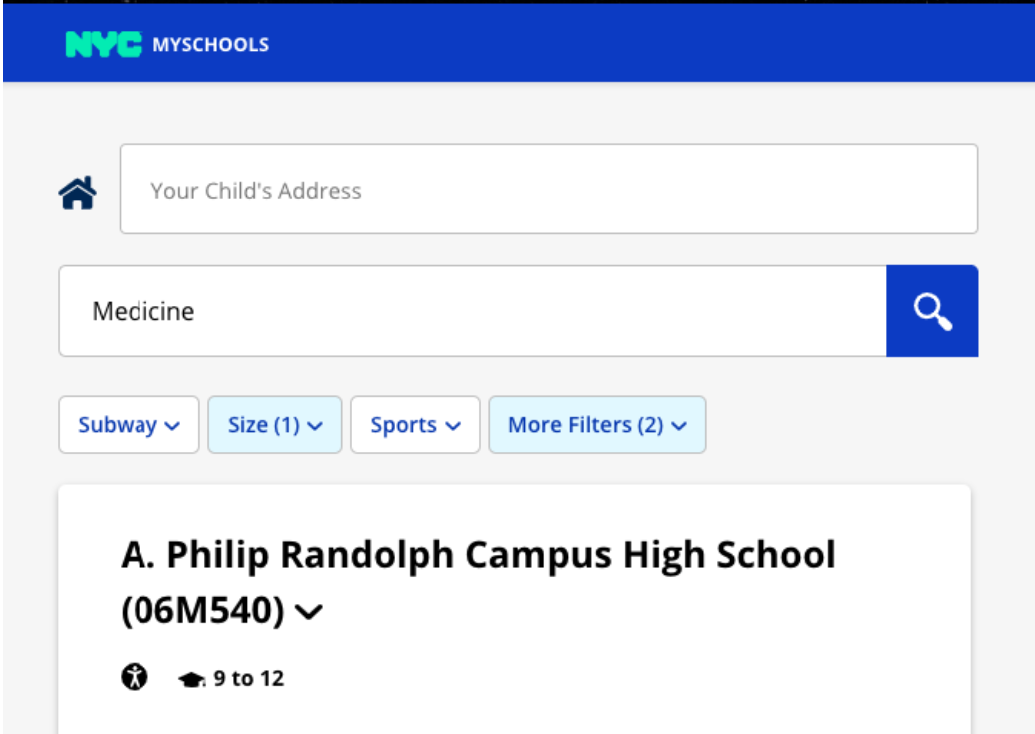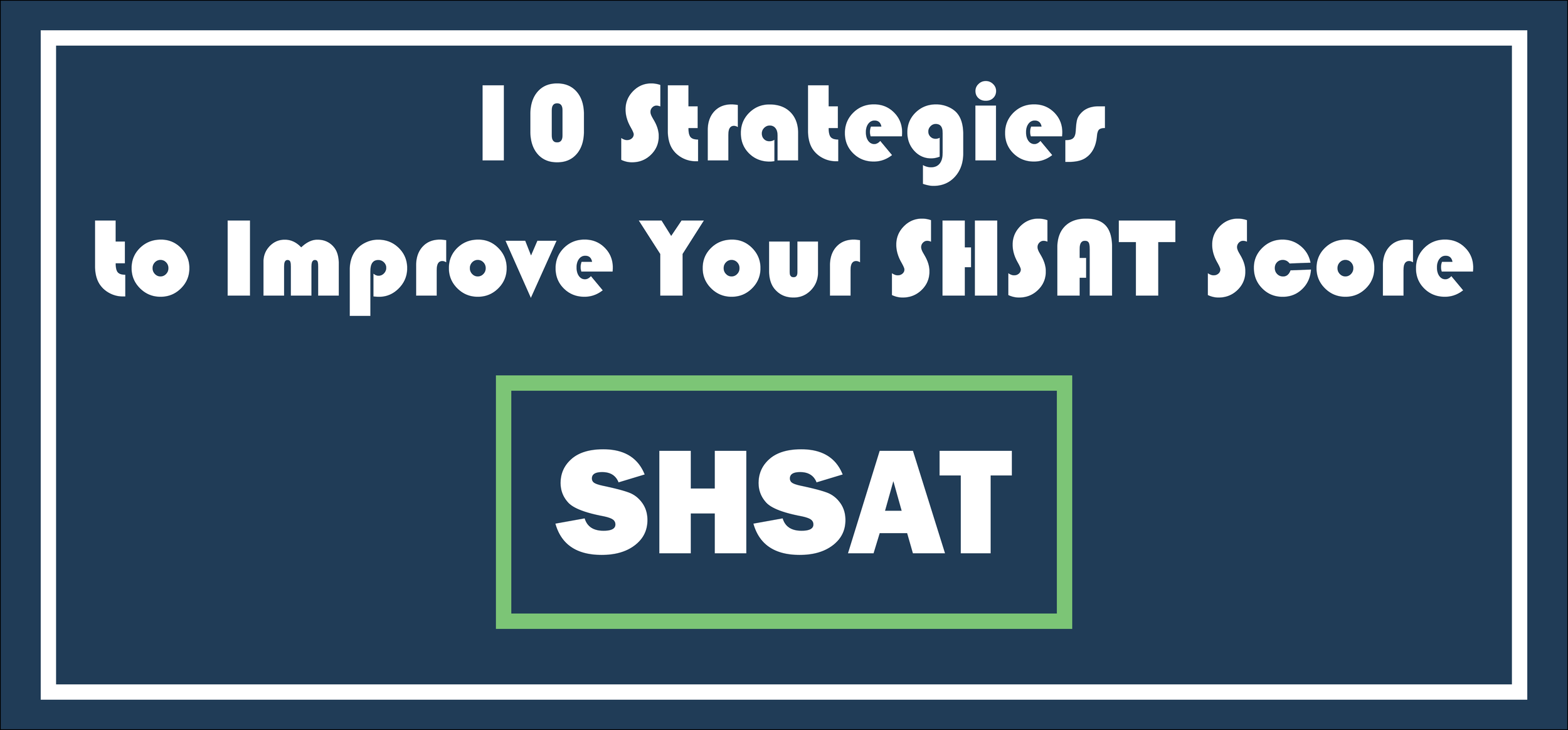SHSAT results have come out and if you didn’t get the results you expected, don’t fret. Not getting into a Specialized High School is not the end of the world. Although you may be disheartened at the moment, it is important that you think of what you need to do next especially if you placed all of your hopes on the SHSAT. You have three options: stay in the high school you were accepted to, transfer high schools, or retake the SHSAT. This blog post can help you decide which option to take.
Looking Towards the Future
After receiving all of your acceptances, you should begin to decide which school you will be spending the next four years of your life at. You should first do some online research about the school. Look into the APs/accelerated courses and extracurricular activities that are available at the school. Generally, the more accelerated courses and extracurricular activities there are, the more funding it has to provide to their students’ growth and education. It is also important that you look into the school’s accomplishments. Has the school won any awards for teaching/teams/ clubs? This gives a hint to how dedicated the faculty and student body is. Make sure to also look into the safety reports and graduation rate of the school. Lastly, you should also look into transportation around the school. You will be attending this school nearly every day of the week for the next four years. A long commute to and from the school can put an adverse dent in your productivity and sleep. Generally, you won’t want to have a commute that is over an hour and a half and requires three or more transfers. However, it is ultimately up to you to decide if the school is worth a long commute. .
Make sure to also attend the open house for accepted students. You can use this day to see how the commute goes. There will also be alumni, faculty, and current students present. You should ask the current and past students for their honest experience at the school. You should ask them about the student body to get a sense of if you can fit in comfortably at the school. Make sure to ask them what the teachers and faculty are like and how trustworthy, helpful, and effective they are. Try to also speak to as many faculty members as you can to get a sense of how comfortable you can be around them. These faculty members, such as the principal, guidance counselors, and teachers are the people who will guide you in your high school career and eventually help you apply to colleges so it is important to know who they are and how much they can help you beforehand.
If you find everything about the school satisfactory, then congratulations on finding the perfect high school and good luck with your high school career! However, if you don’t find it satisfactory, don’t worry, you still have two options: transferring and the 9th-grade SHSAT.
Waitlists
If you did not get into your first choice of high school, you will be waitlisted to all the schools you ranked higher than your current ones. Make sure to check where you are on the waitlist for those schools on your myschools.nyc account as you may still be offered a seat to those schools. Your place on the waitlist depends on the type of program you applied to. For example, if it is a screened program, you will be placed according to the rank assigned to you by the school’s acceptance committee. For all other programs, you receive a random place on the waitlist within your priority group. You can also put yourself on the waitlist of another high school that you were not put on the waitlist for through your account. Note that the specialized high schools do NOT have a waitlist.
If you get an offer to a school you are on the waitlist of, they will contact you directly and you accept/decline the offer from your myschools.nyc account or over the phone. You can also remove yourself from any waitlist at any time from this account.
Transferring
If you do not like your accepted school, you should get started on the transfer process immediately. The application is generally due at the end of October so it is important you begin the process right away. Unfortunately, you will have to stay in the high school you are currently in for a year before transferring. However, you can start looking into schools you would like to attend starting your sophomore year. It is important that you choose a school that fits your expectations this time. Figure out what you think is lacking from your current school and look for schools in which you can find all of this. Make sure to focus on the school’s curriculum, faculty, extracurricular activities, accelerated classes, college preparation, and the overall feeling you get from that school. You can find much of this information on the school’s website. If you need help figuring out what to look into about a school or finding a good high school, these blog posts may help you (1, 2). Using our NYC High Schools Admissions tool can also be of great use if you are looking to transfer to a public high school in New York City.
The transfer process is very similar to the process you completed this year to apply to high school. You can find and submit the application on your myschools.nyc account. You can also find potential schools the same way you did for your previous high school application here. You will also find each school’s requirement for transfer applicants here. For example, some may require testing, a specific GPA, or an essay. To make sure you do not miss any requirements or deadlines, go on the school’s website to find this information. Generally, schools will look into your eighth-grade state test scores and final averages. It is also important that you still maintain a good GPA and attendance rate at the high school you are currently attending as these will stay with you even after transferring schools. You should strive to maintain a good relationship with the staff at your current school as you may need a recommendation letter based on the school you apply to.
It is important that you stay organized throughout this entire process. Make sure to collect all documents you will need for the application beforehand and mark your calendar for any and all deadlines.
Taking the 9th-Grade SHSAT
If you are dead set on attending a Specialized High School, you may want to consider this option. You can retake the SHSAT exam again this November for another chance at getting into a Specialized High School. However, it is important to note that getting a seat through this method is extremely difficult and this test covers different topics from its 8th-grade counterpart. The number of students accepted through the 9th-grade exam is significantly smaller than the number of students offered a seat through the 8th-grade exam. For example, about 800 students get into Stuyvesant through the 8th-grade exam each year, however, only about ten students get in through the 9th-grade exam. It is important to know that significantly fewer students take the 9th-grade test. The test also covers additional geometry and trigonometry topics that the 8th-grade exam does not cover. The cut-off scores for the 9th-grade exam are generally thirty points higher than the ones for the 8th-grade scores. For example, if the cut-off for Bronx Science is 550 for the 8th-grade exam, it would be 580 for the 9th-grade exam.
If you believe you can keep yourself dedicated to a study plan, then this is definitely an option you should consider. If you are still unsure about whether or not to take the exam, this blog post may help you decide. Synergy Prep offers 9th-grade SHSAT tutoring services and guidance on how to study for this exam.
Although you may have not gotten into the school you were hoping for, remember that with dedication and a good work ethic you can do exceptionally anywhere. Synergy Prep can help you through any step of the high school process whether it is by creating a road map of how to be successful in high school, helping during the transfer application process, or preparing for the 9th Grade SHSAT. You can set up an appointment to speak with someone here.


























